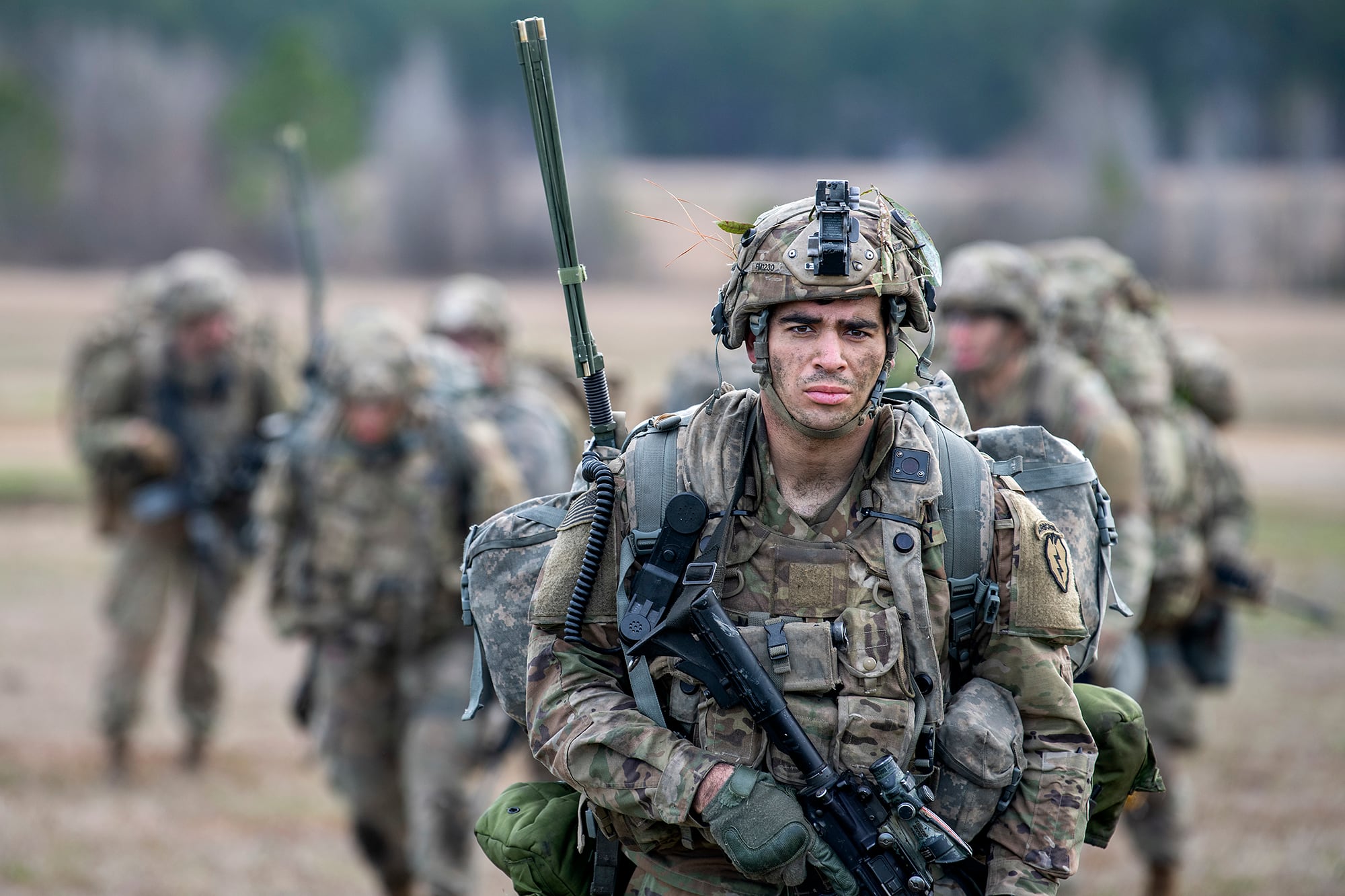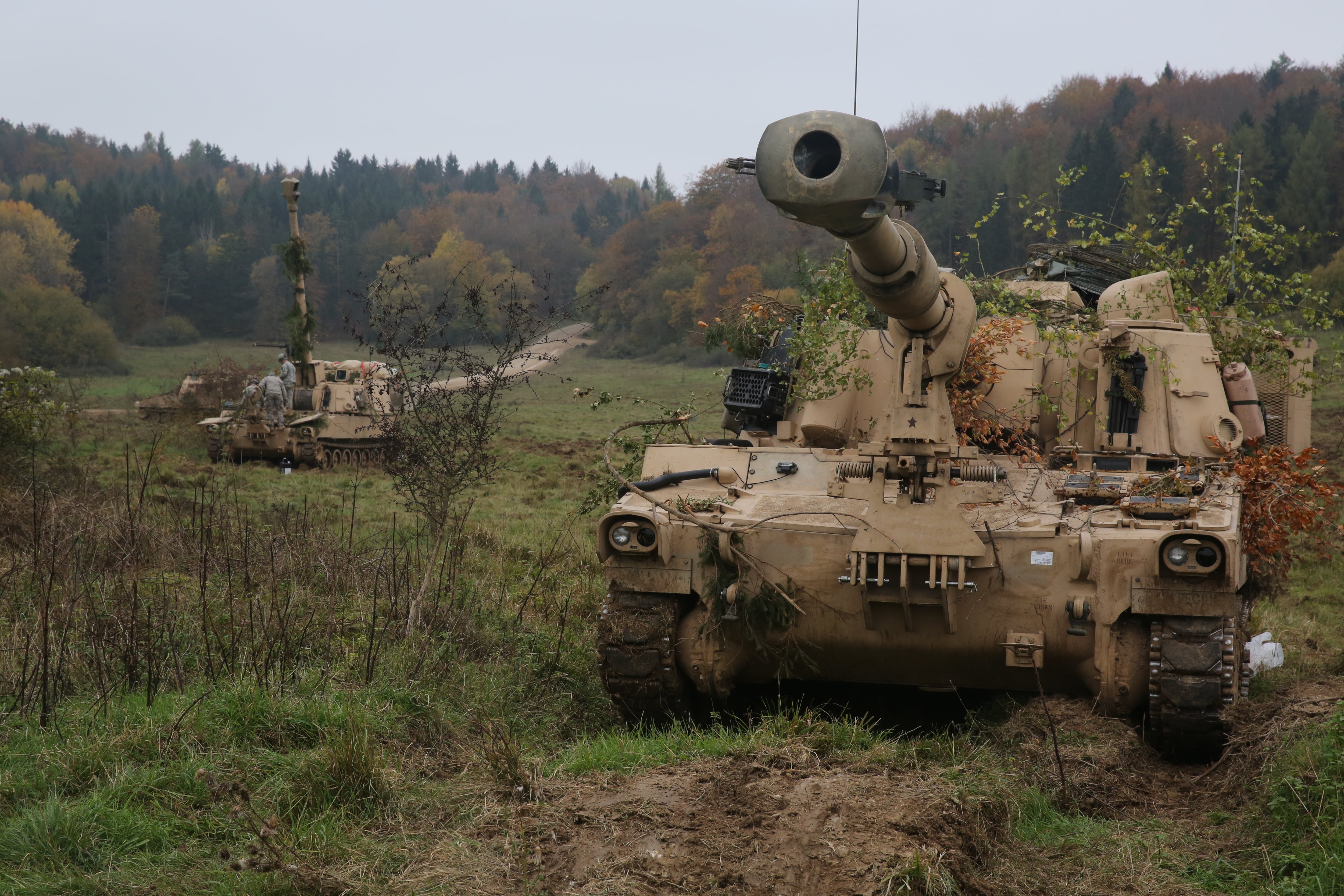The Army is eager to restart battalion- and brigade-level training. And soon, commanders across the country will use a transition framework to determine whether operations at that scale are feasible based on the testing capacity they have at their home station and the number of COVID-19 cases in their local area, according to a senior Army official who spoke on background.
Large-scale collective training is part of how units prepare for overseas deployments and rotations to combat training centers, though the Army has stressed that training at the squad-level and for enablers is also important and that has been ongoing.
“Just like the country, we’re trying to transition,” said the senior official. “The notion of ‘opening up America’ is the same kind of framework that we took to open back up the Army, if you will, to get back to training.”
The transition framework includes four parts, according to the official. First, commanders will have to assess the conditions in their local area, wherever their fort, training installation or even National Guard armory is positioned.
The second part is testing capability. Commanders need to understand how many tests they can run daily and what rate is necessary to move from squad and platoon training to larger collective training.

Various types of testing devices have been purchased and sent out to installations. Some devices are on the lower-end and can only run a few dozen tests in a 24-hour period, while others are on the higher-end and can run hundreds daily.
A commander may decide to test an entire battalion before heading off the field, the Army senior official said, but that would be up to them and they would make the decision based on how many tests they can run daily and how many COVID-19 cases there are among their local population.
“If the local rate is really bad, then they probably need to do more testing," the senior official said. "But if the local rate is better, then maybe they don’t need to do as much testing.”
Testing has increasingly become important, as up to 25 percent of people with the virus may never show symptoms, Centers for Disease Control director Dr. Robert Redfield warned publicly in late March.
Third, commanders need to take a look at their treatment capabilities. Commanders will assess their on-post medical capabilities, as well as local hospitals, and determine if their bed capacities are sufficient and if they have enough intensive care units.
Finally, commanders will be responsible for ensuring their tracing teams are able to track any outbreaks that could crop up as their units restart training. Public health officials have warned that a second wave of COVID-19 cases could come this fall.
“We’re trying to set up a framework where they’ve got some freedom to make some decisions based on the risk assessment they make at the local level," the senior official added.

About 70 percent of U.S.-based Army families live off-post, some with spouses who work at local businesses and kids who attend local schools. Many civilians also work on-post, and soldiers also rely on child care facilities in the communities surrounding their bases to take care of kids during the workday.
The Army has also delayed the combat training center, or CTC, rotations for four brigade combat teams. This transition framework is designed to set the conditions for a return to those rotations, the senior official explained. The Army budgeted to conduct 25 brigade rotations through CTCs this fiscal year, as well as 24 rotations in fiscal 2021, which begins in October.
The 4th Security Force Assistance Brigade announced this week it still plans to rotate to the Joint Readiness Training Center at Fort Polk, Louisiana, in June. That rotation will come before the unit deploys for its first-ever time since activating to Afghanistan.
Army Chief of Staff Gen. James McConville mentioned the coming push to restart training during a Pentagon briefing on Thursday that largely focused on West Point’s decision to hold a graduation ceremony this summer. The chief said he visited JRTC at Fort Polk on Wednesday to view the measures being put in place to restart rotations there, which included screening, testing and controlled monitoring.
“I was down at the Joint Readiness Training Center, which quite frankly, is in Louisiana and is closer to a place that’s been hot, but they are not hot right now — not hot at all," McConville said. “So every single situation is different and one size is not going to fit all and I think that’s what we expect our commanders to be able to do.”
As of Thursday morning, the Army has had 2,751 total COVID-19 cases, including 1,646 military personnel across all three Army components, McConville said. Of the military personnel, 524 individuals have already recovered, he added.
Kyle Rempfer was an editor and reporter who has covered combat operations, criminal cases, foreign military assistance and training accidents. Before entering journalism, Kyle served in U.S. Air Force Special Tactics and deployed in 2014 to Paktika Province, Afghanistan, and Baghdad, Iraq.




